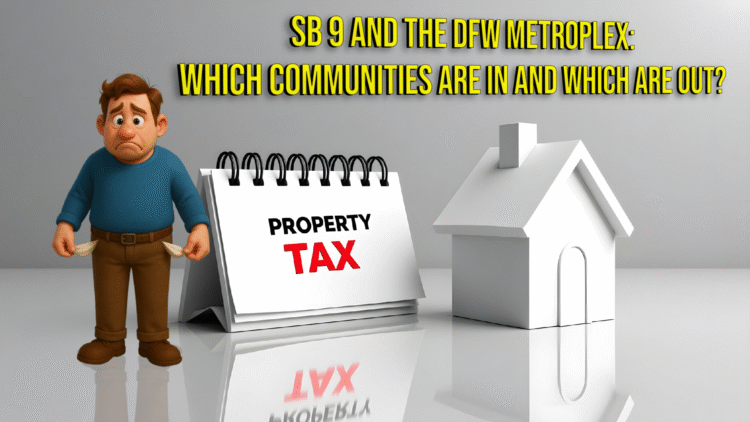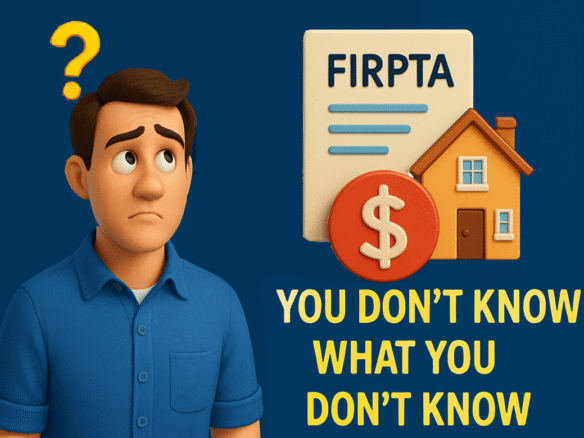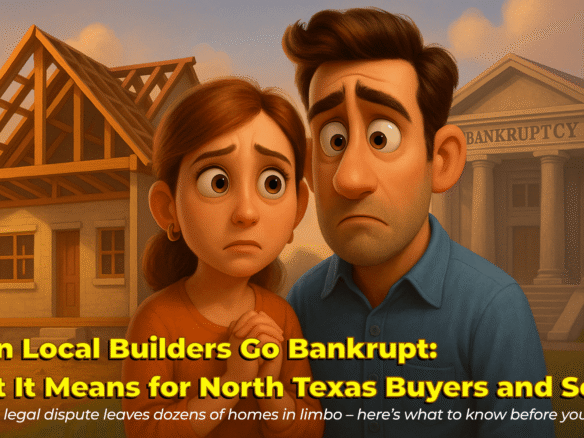The Texas Senate’s recent passage of Senate Bill 9 (SB 9) could bring new limits on how much property tax revenue many cities and counties can collect without voter approval. The bill lowers the cap from 3.5% to 2.5% annually for those with populations over 75,000.
For the Dallas–Fort Worth Metroplex, this means some cities would see tighter revenue growth limits, while others would continue under current rules.

Communities Over 75,000 Residents – Stricter Cap Applies
If SB 9 becomes law, these communities will have their annual property tax revenue growth capped at 2.5% (excluding new construction) unless voters approve a higher rate.
Examples of Larger DFW Cities Impacted:
- Dallas – Estimated pop. ~1,300,000
- Fort Worth – Estimated pop. ~980,000
- Arlington – Estimated pop. ~400,000
- Plano – Estimated pop. ~288,000
- Frisco – Estimated pop. ~240,000+
- Irving – Estimated pop. ~255,000
- Allen – Estimated pop. ~115,700
- McKinney – Estimated pop. ~215,000
- Garland – Estimated pop. ~246,000
- Grand Prairie – Estimated pop. ~213,000
Note: This is not a complete list of all DFW-area cities over 75,000 residents.
Impact for Property Owners:
For residents in these cities, the cap could mean smaller annual increases in property taxes without voter approval. However, it may also lead to tighter city budgets—impacting things like public safety, infrastructure upgrades, and community programs.
Communities Under 75,000 Residents – Current Cap Remains
These communities would keep the 3.5% annual cap on property tax revenue growth without voter approval:
- Little Elm – ~55,000
- Keller – ~45,000–47,000
- Sachse – ~29,000–33,800
- Southlake – ~31,265
- Rowlett – ~66,800
- Princeton – ~28,000–37,000
- Celina – ~60,323
- Prosper – ~48,889
- Anna – ~34,255
- Melissa – ~21,000–23,000
Note: This is not a complete list of all DFW-area cities under 75,000 residents.
Impact for Property Owners:
Since the 3.5% cap remains, these communities will have slightly more flexibility in budgeting without going to voters—at least until population growth pushes them over the 75,000 mark, at which point SB 9’s stricter limits would apply.
Challenges SB 9 Faces Before Becoming Law
While the Texas Senate passed SB 9 by an 18–3 vote, its future in the Texas House is far from certain. At the time of passage:
- House Democrats had left the state in an effort to block unrelated redistricting legislation, preventing the House from reaching a quorum.
- Without enough lawmakers present to conduct business, SB 9 and other pending bills cannot be voted on.
- Even if a quorum is restored, debate over SB 9’s impact on local governments could slow or stall the bill’s progress. Supporters tout taxpayer relief, while critics warn it could limit funding for essential services.
The outcome will depend on whether legislators can return, negotiate, and secure enough votes for final passage.
Why This Matters for DFW
The Metroplex is one of the fastest-growing regions in the U.S., and many of today’s “under 75K” communities are on track to exceed that threshold in just a few years. SB 9 could mean that as these cities grow, they’ll face tighter limits on funding unless voters approve more revenue, potentially changing how fast new roads, schools, and public services can keep up with demand.





Join The Discussion